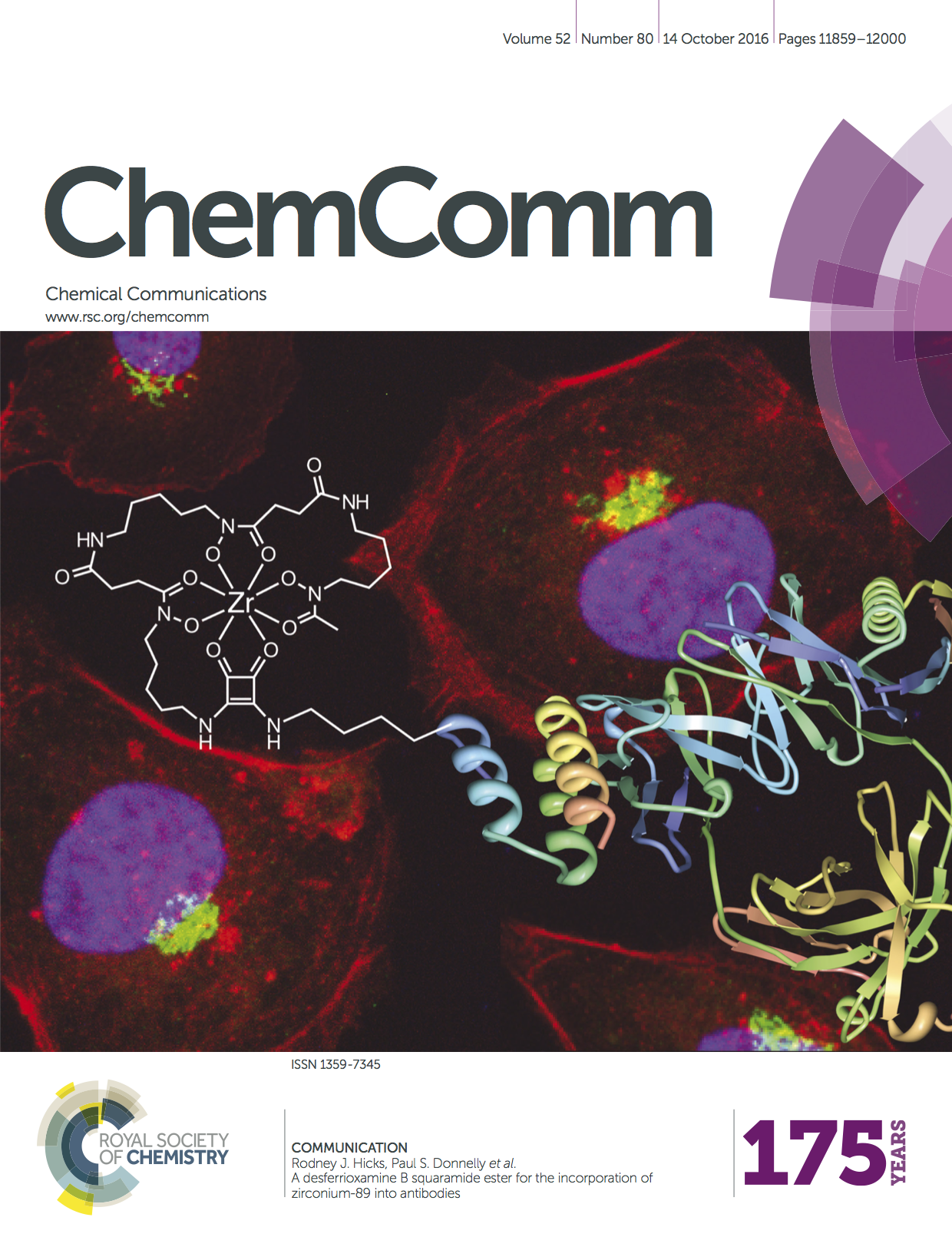Research from Stacey Rudd and Paul Donnelly features on the cover of Chemical Communications
The labelling of antibodies with radioactive isotopes can combine the diagnostic and therapeutic possibilities of nuclear medicine with the selectivity of antibody targeting. Antibodies labelled with positron-emitting radioactive isotopes can be used as tracers for positron emission tomography (PET) imaging and are of interest as companion diagnostics to therapeutic antibodies. The desire to find a more suitable radioisotope for antibody imaging has led to a surge in interest in the zirconium-89 radioisotope due to its half-life of 3.3 days and good physical characteristics for antibody-based PET imaging.
Paul Donnelly and Stacey Rudd from the University of Melbourne have prepared a squaramide ester derivative of a bacterial siderophore, desferrioxamine B, that is compatible with aqueous solvents and does not induce antibody aggregation. They used this new derivative to attach the siderophore to the antibody trastuzumab, an antibody that binds to the extracellular domain of human epidermal growth factor receptor 2 (HER2) and is used as a therapy for treatment of HER2-positive breast cancer. In collaboration with Rodney Hicks from the Peter MacCallum Cancer Centre the new conjugates were radiolabeled with 89Zr to give complexes that are more resistant to ligand exchange when compared to currently used derivatives and result in high quality positron emission tomography images in mouse models of HER2 positive breast cancer. The work was published in Chemical Communications and artwork inspired by the research was selected to feature on the journal cover.
